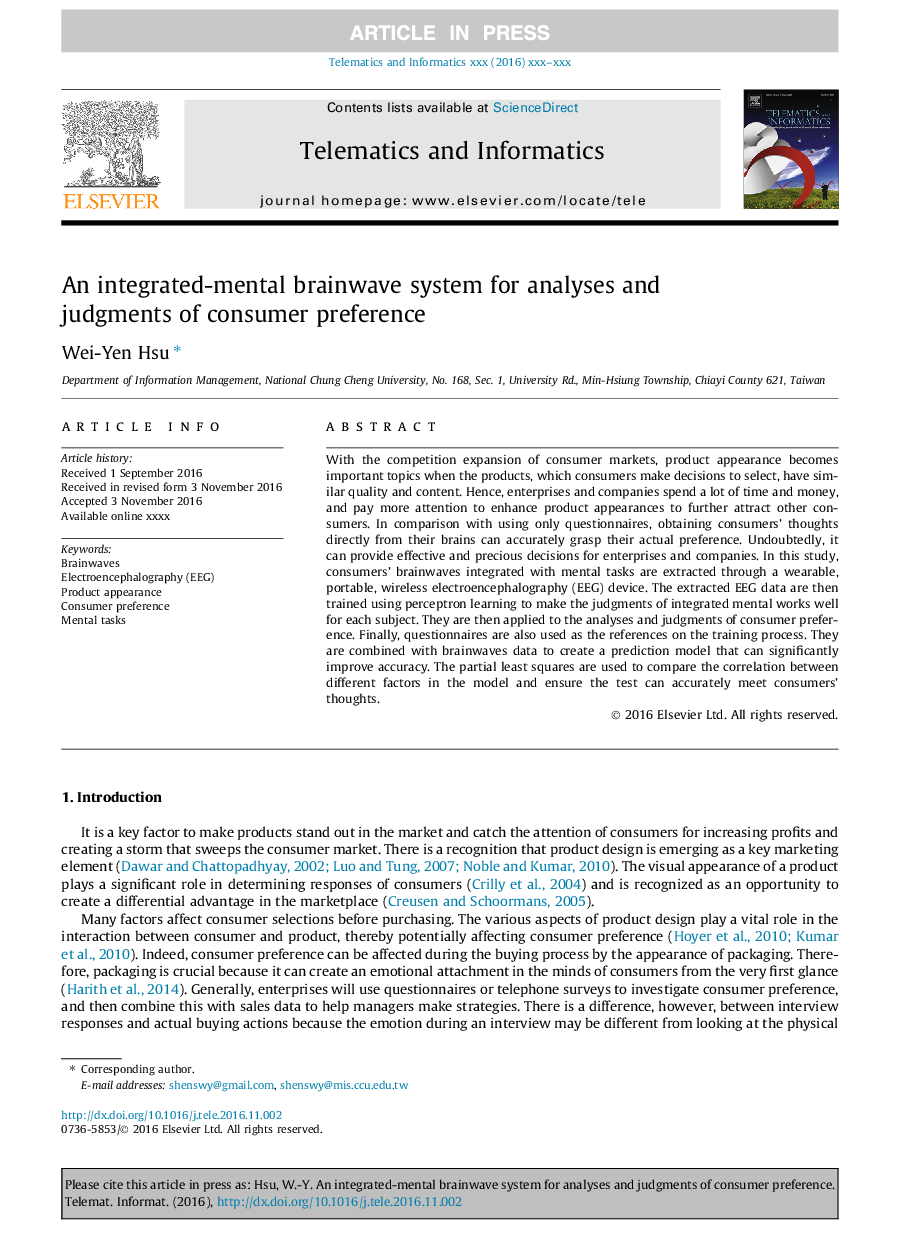| Article ID | Journal | Published Year | Pages | File Type |
|---|---|---|---|---|
| 4957666 | Telematics and Informatics | 2017 | 9 Pages |
Abstract
With the competition expansion of consumer markets, product appearance becomes important topics when the products, which consumers make decisions to select, have similar quality and content. Hence, enterprises and companies spend a lot of time and money, and pay more attention to enhance product appearances to further attract other consumers. In comparison with using only questionnaires, obtaining consumers' thoughts directly from their brains can accurately grasp their actual preference. Undoubtedly, it can provide effective and precious decisions for enterprises and companies. In this study, consumers' brainwaves integrated with mental tasks are extracted through a wearable, portable, wireless electroencephalography (EEG) device. The extracted EEG data are then trained using perceptron learning to make the judgments of integrated mental works well for each subject. They are then applied to the analyses and judgments of consumer preference. Finally, questionnaires are also used as the references on the training process. They are combined with brainwaves data to create a prediction model that can significantly improve accuracy. The partial least squares are used to compare the correlation between different factors in the model and ensure the test can accurately meet consumers' thoughts.
Related Topics
Physical Sciences and Engineering
Computer Science
Computer Networks and Communications
Authors
Wei-Yen Hsu,
